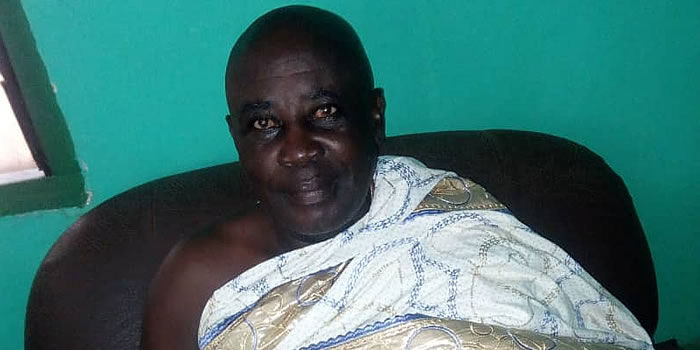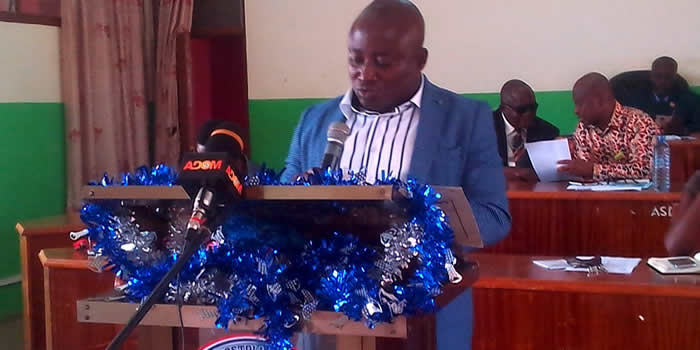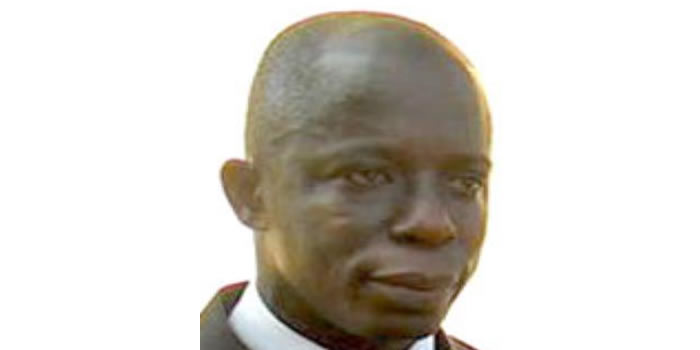

Information, Communication and Technology
Information Communication Technology (ICT) has played transformational roles in the development of economies worldwide. Due to the important of ICT in socio-cultural and economic development, several efforts have been made by the government to enhance ICT in the country. Some of these efforts include the establishment of Community Information Centre (CIC) under ICT4AD programme. This is to spread ICT infrastructure in the communities and to ensure that Ghana and its people fully participate in information age, to enjoy the benefits of emerging information revolution.
This charter therefore explores ICT information on mobile phone ownership, access to computer and internet as well as household ownership of fixed telephone lines. Information on ICT was recorded for persons 12years and older for the purpose of 2010 Census. This is however the first time such questions were asked in national Census.
Apart from the land line telephone service the District also has access to all the other communication mobile service providers namely MTN, Vodafone, TIGO and AIRTEL. It is believed another mobile network would be joining very soon.
There is one private internet facility in the District which is at New Edubiase. Due to the pressure on this facility, the few users of internet move to nearby Districts to seek for information when the need arises. The District Assembly however has plans of increasing the provision of this important service in the District.
Ownership of Mobile Phones
Ghana has experienced a rapid increase in mobile phone penetration and usage in recent times. The use of mobile phones has been an important mode of communication for social and business activities for the majority of Ghanaian since as far back as 2003.
Table 18 presents information on mobile phone ownership and internet usage by population 12years and older in the District. The information from Table 5.1 reveals a total of 21,679 mobile phone owners in the District. This is less than a third (29.0%) of the population 12 year and older from which the information on ICTs was collected. Also, 62.2 percent representing the majority of mobile phone owners are male while female owners represent 37.8 percent.
Use of Internet
Just as mobile phone usage, the use of internet facility as a mode of communication provides varieties of opportunity for business owners as well as public and other private organisations, and even at the individual level. The use of internet cut across population, sex, rural-urban locality and all levels of education, from basic to tertiary. There are as low as 1,046 internet users, representing 1.4 percent of population 12years and older in the District. This is about one (1) out of seventy-four (74) of the referred population.
Household Ownership of Fixed Telephone Lines
Fixed telephone line refers to a telephone lines connecting a customer’s terminal equipment (e.g telephone set, facsimile machine) to the public switch telephone network. So far as 2010 census is concerned, information on fixed telephone lines was collected at the household level. 2010 PHC recorded a very low fixed telephone lines usage in the District. Only 47 households (0.2%) own a fixed telephone lines. Male headed households (78.7%) own fixed telephone lines while female headed
household owners represent 21.3 percent (Table 2.19). The low usage of fixed line is associated with the increasing usage of mobile phones with its conveniences.
Household Ownership of Desktop or Laptop Computer
Access to information and internet becomes easier with ownership of desktop/laptop computer in modern society. The use of desktop/laptop computer is therefore vital for processing information for both public and private organisations.
Ownership of desktop/laptop computers were examined at the household level during the 2010 PHC, to find out the extent to which household members have access to internet and other forms of social media. As depicted in Table 19, there are as low as 335 households (1.3%) owing desktop/laptop computer in the District. In relation to sex of household head of the households having desktop/laptop computer, the figure for male headed household owing desktop/laptop computer stands at 269 while that of female headed household stands at 66.
Postal Service
There are two main postal centres in the District. One is in the District capital, New Edubiase and the other one at Akrofuom. The revenue generated by the post centres per month has fallen for some time now due to the high use of mobile phones in the District.
There is however the plan for introducing instant money transfers and Expedited Mails Services in the District hopefully by the end of the year
Housing Stock
It can be seen from Table 8.1 that the total stock of houses in the District is 20,541 comprising 87 percent in the rural areas and 13 percent in the urban.
Population per house is the proportion of the total population to the number of houses. It can further be seen that the average household per house for the District is 1.2 and that of rural and urban areas are 1.2 and 1.8 respectively. The population per house in the District is 5.5, while that of rural and urban areas are 5.3 and 6.9 respectively.
The average household size in the District is 4.4 which is same as that of the country (4.4) and slightly higher than that of the region (4.1). In rural areas, the average household size is 4.6 whereas 3.8 is for urban areas.
Type of Dwelling, Holding and Tenancy Arrangement
Table 6 shows that there are 25,626 occupied dwelling units in the District out of which 18,083 have male headed households and 7,543 female headed. And there are more occupied dwelling units in rural areas (20,745) than in urban areas (4,881). Moreover, 17,414 dwelling units were owned by household members in the District, followed by those owned by other private individual (3,823) and relative not a household member (3,459), while other (83) had the lowest share.
In rural areas, most dwelling units were owned by household members (15,447) followed by those owned by relative not a household member (2,408) and other private individual, while other (68) had the lowest share. On the other hand, in urban areas, 1,967 dwelling units were owned by household member, and then those owned by other private individual (1,740) and relative not a household member while those being purchased (6) are the lowest.
The type of occupied dwelling unit by sex of household head and type of locality is presented in Table 2.7. Out of a total of 25,626 occupied dwelling units in the District compound houses (43.7%) constitute the highest proportion, followed by separate house (40.1%) and semi-detached house (8.4%).
It can further be seen from Table 8.3 in rural areas, separate house (44.7%) had the highest proportion of the total occupied dwelling units, followed by compound house (rooms) (38.2%) and semi-detached house (8.7%). In urban areas, compound house (66.7%) forms the greatest percentage, followed by separate house (20.2%) and semi-detached house. More so, in separate house, there are more male household heads (42%) than their female counterparts (35.3%), while in compound house, more females (50.5%) than males (40.8%) were household heads, (Table 2.7).
Construction Materials
The types of construction materials used for dwelling units in the country, region and the District are presented in Table 8.4. The most common construction material used for outer wall in the District is mud brick/earth (69.4%), followed by cement blocks/concrete (24.1%) and wood (1.5%), while stone (0.1%) and bamboo (0.1%) constitute least used.
Cement blocks (70.4%) were mostly used for outer wall in urban areas followed by mud brick (26.2%) and burnt bricks (1.0%). On the other hand, in rural areas, mud bricks (79.1%) had the greatest proportion, followed by cement blocks (13.7%) and landcrete (2.9%) while stone (0.1%) and bamboo (0.1%) were least used for outer wall.
It is further observed that cement (68.5%) was mostly used for the floor of dwelling units in the District. This was followed by the use of mud (29.1%), whereas burnt brick, terrazzo and other were least used (0.1%).
In urban areas, the use of cement for floor (85.3%) had the highest proportion, followed by mud (11.7%) while other materials (0.0%) formed the least. Similarly, in the rural areas, cement (64.5%) was the most common material used for the floor, followed by mud (33.2%) while burnt brick and terrazzo had 0%. (Table 2.9)
Table 10 shows that metal sheet was mostly used for roofing of dwelling units in the District accounted for 81.9 percent, followed by raffia (9.2%) and bamboo (5.8%) while roofing tile (0.1%) was least used. The distribution by type of locality revealed that in both urban and rural areas, metal sheet was the main roofing material accounting for 96.2 percent and 78.7 percent respectively.
Room Occupancy
The distribution of household size and the number of sleeping rooms they occupied is presented in Table 11. On the whole, single room constitutes the highest percentage (55.9%) of all the types of rooms occupied, followed by double rooms (24.3%) and three rooms (10.6%). The proportion of households with size one occupying a single room is 89.0 percent as against 7.5 percent of households with ten or more members.
Access to Utilities and Household Facilities
The main source of lighting used by the household is presented in Table 8.8 by type of locality. The use of flashlight is the most commonly used source of lighting of dwelling units in the District representing 53 percent. Electricity (mains) (29.1%) and kerosene lamp (15.5%) had the next higher proportions, while crop residue was least used (Figure 8.1)
In urban areas, electricity (mains) accounts for the highest percentage (77%), followed by flashlight (13.8%) and kerosene lamp (8.2%), whereas crop residue represents the lowest share (0%). On the other hand, flashlight (62.3%) was mostly used in rural areas, followed by electricity (mains) and kerosene lamp with 17.9 percent. Private generator (0.1%) and crop residue (0.1%) were least used as source of lighting in rural communities. (Table 2.12)
Table 2.13 contains the distribution of main source of cooking fuel, and cooking space used by households in the District. It can be seen from the Table, that 76.4 percent of households use wood as the major source of cooking fuel, followed by charcoal (15.2%) and gas (3.4%). In urban areas, charcoal (48.3%) is mostly used, followed by wood (32.4%) and gas (10.7%), while animal waste is least used by households. Conversely, wood accounts for the highest proportion (86.8%), followed by charcoal (7.4%) in the rural areas, with those who do not cook constituting 3.5 percent.
Moreover, it can be observed from Table 8.9 that households that use separate room exclusively for cooking has the highest percentage (47.4%) in the District, followed by veranda users (15.3%) and households using open space in compound (10.9%).The use of bedroom and other spaces for cooking constitute the lowest share (0.3%).
Date Created : 11/10/2017 7:04:34 AM










 facebook
facebook
 twitter
twitter
 Youtube
Youtube
 +233 593 831 280
+233 593 831 280 0800 430 430
0800 430 430 GPS: GE-231-4383
GPS: GE-231-4383 info@ghanadistricts.com
info@ghanadistricts.com Box GP1044, Accra, Ghana
Box GP1044, Accra, Ghana